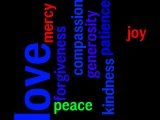
For myself I like to think of someone who is a devoted caregiver for the young, the sick or the elderly. In particular, I have in mind several sets of parents that I knew in St. Ann’s parish in Nashville, TN. Each of these sets of parents had one or more severely handicapped children in their family. To see the way that they cared for them and nurtured them has always been for me the best image of the "good shepherd." There are lots of aspects to the quality of their "shepherding" of these children. They had to have a real sense of the child’s limits, of what the child simply could not do. Yet they still loved the child as all the other children in their family. They also had the conviction and the patience to nurture the child to improve and move forward, fully knowing that the child would never come up to the achievements of their other children. They had to have patience, patience and more patience. All that is part of the image of the "Good Shepherd" and how Jesus deals with us.
As beautiful as that may be, it’s important for us to remember that these qualities of the Good Shepherd are supposed to be the model for all Christian ministry. The bishop’s staff (his shepherd’s crook) reminds us of that. Benedict’s Rule certainly rephrases it correctly in all the directives he gives about the qualities that the Abbot should possess. But again it’s not just the abbot, but those attitudes should pervade all the members of the community as they serve each other. And again it’s not just the bishop, but all the ministries of the diocese should follow the model of the Good Shepherd.
I think we need to face the facts that this style of ministering is severely challenged in our time. Many commentators on modern society have noted how dominated our modern Western society is by the dynamics of the open market economy. The style of free market economics is beginning to pervade all aspects of life. The goals of the free market are production and more production each year. It takes no account of the needs and limitations of individuals. If you don’t produce, then you are replaced. Many people have noted how much the language of free market economics has invaded the fields of medicine and education. Everything becomes a commodity—to be produced, then bought and sold. Even the realm of religion is influenced by this. What often drives the mentality of dioceses and parishes is the challenge of producing more than last year. All you have to do is look at how much the diocesan assessment for parishes is expected to grow each year. It’s the exact opposite of the dynamics of the Good Shepherd.
For each of us, in whatever area of ministry we are in, or in the quality of our relationships in community to each other, this Sunday’s readings are a call to examine how we model the qualities of the Good Shepherd in our actions, how we reflect the qualities of those parents of handicapped children, how we show patience and, above all, how we try to respect the limitations of those people we serve.
Sunday, July 19, 2009
Fr. Matthias Neuman's Homily for the 16th Sunday in Ordinary Time
Subscribe to:
Post Comments (Atom)




No comments:
Post a Comment